
The 20 Secrets of the Miraculous Medal
I wear a Miraculous Medal for over 15 years.
I wear it religiously, pun intended.
If you are not Catholic , you may be wondering " Why ? "
And if you are a 7 year old boy who is not Catholic, you might be wondering, "Why are you wearing a medal with a GIRL on it?"
Well, dear theoretical 7 year old boy, I don't wear it for the looks, although I think it looks pretty cool, especially at because of the girl on it.
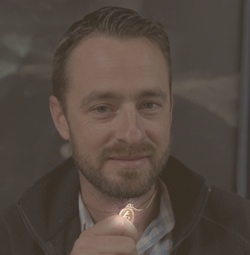
And, my imaginary little enemy, I don't wear it out of habit, and Speaking of habits, I will soon tell you about an extraordinary young woman who wore a dress larger than her shoulders.
The truth is that I wear a Miraculous Medal because I believe in his promises .
After all, the Miraculous Medal is at least partly responsible for bringing me back to church when I was 21.
You see, although my parents baptized me as a child, they divorced when I was young and I grew up without religion. I had some belief, of course, but I also had a lot of doubts.
Yes, I was once that 7 year old boy who allegedly interrogated a man wearing a medal with a girl on it.
Finally, the Church caught up with me.
When I was 20, my grandfather, one of the few remaining practicing Catholics in our family, started talking to me. Marian apparitions . As I listened to both curious and skeptical, he suddenly stopped mid-sentence and removed a gold chain from around his neck.
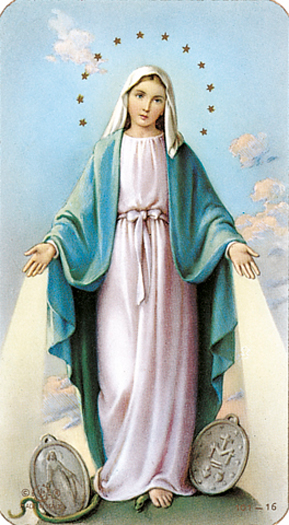
"I've had it since I was young," he said, placing it in my hand. " I want you to keep her. "
But he wasn't talking about his gold chain. A miraculous gold medal was attached to it. I didn't know what to say, but thank you was not the first thing that came to my mind. It certainly didn't seem like something I would wear. Especially not in public.
I returned the medal in my hand. The shining face of the Virgin Mary looked at me with a blank stare as if to ask: "Well, Alexander, are you going to please your dear grandfather or do you want to make him sad?"
I put the chain around my neck and thanked my grandfather, then we parted ways. I forgot about it that night.
I decided to put the medal in my desk drawer and try to remember to wear it the next time I visit my grandparents. However, every time I started to take the collar off I felt guilty, like I was doing something wrong. When I finally managed to remove it, I felt that a part of me was missing.
So I just started to wear the medal every day ( under my shirt, of course ). Almost immediately a series of personal events began to unfold which have changed the course of my life and made me a believer, a Catholic and, in the eyes of my friends at the time, the No. 1 of the Holy Mother .
Since then, I have worn the same Miraculous Medal. This has been a source of consolation in times of worry, and a light in the dark when I was lost.
The Church celebrates the feast of Our Lady of the Miraculous Medal every November 27. The next day, November 28, is the feast of Saint Catherine Labouré, the French nun who experienced the Marian apparitions from which the Miraculous Medal was issued.
Recently after seeing these holidays on my calendar ( Yes my calendar Catholic ), I got to know more about this life-changing medal that hung around my neck for all these years. I was so amazed by what I discovered that I wanted to share it with you.
So here are the 20 things I didn't know about the Miraculous Medal ...
1) Catherine Labouré's family did not call her Catherine

Catherine Labouré was born on May 2, 1806 in the village of Fain-Les-Moutiers, located in Burgundy in France. Catherine, the second born daughter, was one of 11 living children.
Catherine's birthday, May 2, falls on the feast day of Saint Exupère and Zoe, therefore from an early age, everyone called her Zoe . According to Catholic tradition, Saint Zoe and her husband Saint Exupère, also known as Supèri, were Christian slaves who were tortured and killed when they refused to eat the food their master had offered to the gods.
2) Catherine was born in the month of Mary
For centuries the Catholic Church has set aside the entire month of may to honor Mary, Mother of God. And, later in her life, Catherine predicted that a time would come when the whole world would honor the month of mary .
3) Catherine Labouré lost her mother at a very young age
Catherine's mother often said to her: " In our sorrows, we must always run to Mary - she never turn away from a child who loves him. "
When Catherine was 9 years old, her mother passed away. Although it was heartbreaking for Catherine, she found comfort and strength in her faith.
"Dear Blessed Mother", said Catherine, "Now you will be my mother."
Pope John Paul II , who had an equally strong devotion to the Blessed Mother, was also only 9 years old when her mother passed away.
4) Catherine experienced mystical visions from an early age
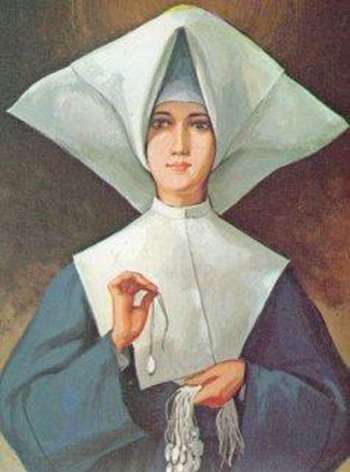
One day, the young Catherine was in the church of the village of Fain-Les-Moutiers when she had one of her first mystical experiences.
In her vision she saw a old priest celebrate mass. The old priest motioned to her, but she stepped back, never taking her eyes off him. Suddenly Catherine found herself in what looked like an infirmary. The same priest was there. He looked at her and said: “My child, it is a good idea to take care of the sick. You are running away from me now, but one day you will come willingly to me. God has plans for you. Do not forget this."
She prayed to understand the meaning behind her vision.
5) Catherine's father did not want her to enter religious life
After Catherine had received his First Communion at the age of 12, she had a deep desire to pursue a vocation in religious life. Her older sister, Marie Louise Laboure, had recently joined the Daughters of Charity.
When Catherine was a young woman, her father introduced her to a number of suitors and urged her to marry. "I will never get married" , she said to him. "I have promised my life to Jesus Christ."
At the age of 22, Catherine asked her father for permission to follow in her sister's footsteps. Her father, however, refused and sent her to work in her brother's cafe in Paris. Although she is a country girl who has never learned to read or write, Catherine never falters in his faith and remains determined to enter religious life.
At the age of 24, Catherine visited a hospital run by the Daughters of Charity and was surprised to see a painting on the wall of a man who looked exactly like the old priest in his vision.
She asked a nun about the painting, and the nun replied: “He is our founder, Saint Vincent de Paul.
Soon after, Catherine's father changed his mind and granted her permission to follow her dream. She entered religious life on January 22, 1830 at the Hospice de la Charite in Châtillon-sur-Seine. Her postulancy lasted three months, after which she was sent to live at the motherhouse of the Daughters of Charity of Saint Vincent de Paul in 140 rue du Bac in Paris.
6) Catherine saw the heart of Saint Vincent de Paul
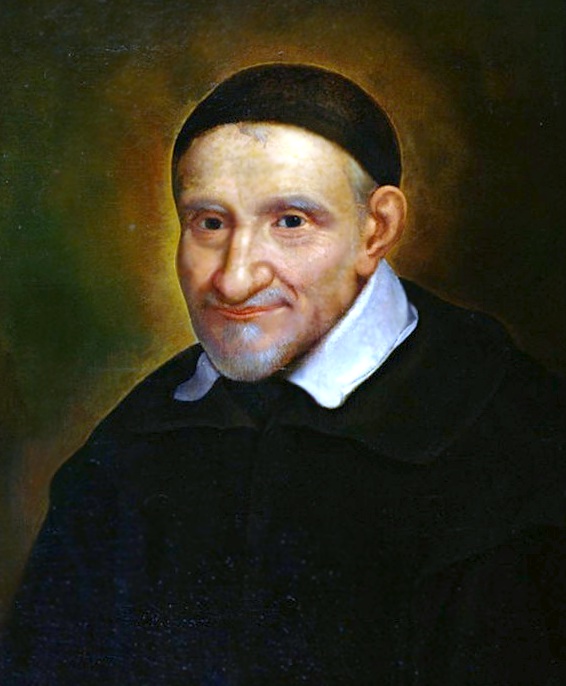
Saint Vincent de Paul, who lived from 1581 to 1660, was a French priest dedicated to helping the poor and the sick. He founded the Daughters of Charity with a widow named Louise de Marillac, who was also declared a saint.
In April 1830, when the remains of Saint Vincent de Paul were transferred to the church dedicated to him in Paris, the Daughters of Charity took part in processions and prayers in honor of their founder. For three consecutive nights, Catherine had visions of what she believed to be the heart of Saint Vincent de Paul . When she told the convent chaplain about her vision, he asked her to forget what she had seen and not to talk about it.
7) Catherine had prayed to see Notre-Dame before the first apparition
July 18, 1830, eve of the feast of Saint Vincent de Paul , Catherine prayed that Saint Vincent intercede for her by asking God to grant her a special favor.
"I went to bed thinking that tonight I would see my Good Mother", writes Catherine. "I wanted to see her for so long! Finally I fall asleep with the thought that Saint Vincent would obtain for me the grace to see the Blessed Virgin. "
8) Catherine believes she has met her guardian angel
It seems that Saint Vincent heard Catherine's prayer that evening.
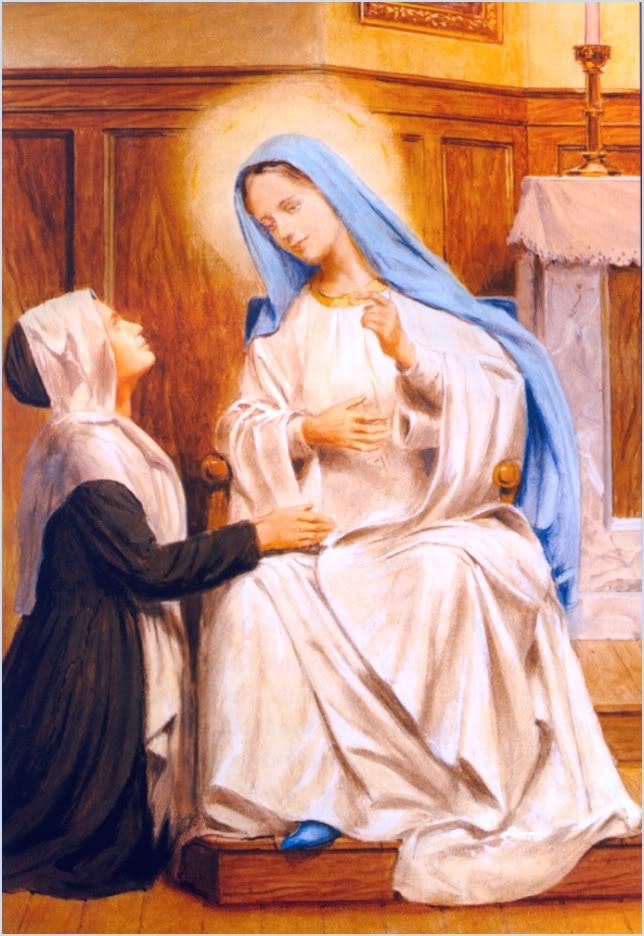
Catherine explained what happened next in her own words: “At half past eleven in the evening, I heard myself being called by my name. When I woke up, I pulled back the curtain and I saw a child dressed in white, about four or five years old, saying to me: Come to the chapel. Get up and come to the chapel. The Blessed Virgin is waiting for you! "
“The child in white,” said Catherine, was a little boy with blue eyes and golden hair. She later guessed that it could have been his guardian angel.
The child led Catherine into the chapel, where she was surprised to find all lit candles as if it was midnight mass. But the chapel was empty.
Catherine then described hearing a noise "like the rustle of a silk dress" from an invisible source that seemed to move close to an image of St. Joseph through the chapel to the altar steps. Suddenly, Catherine saw the Blessed Mother appear there. "I jumped forward with a bound to her side - kneeling on the steps of the altar, my hands resting on the knees of the Blessed Virgin. There I had the sweetest time of my life. "
9) Catherine's visions included prophecies and future events
Mary told Catherine that God had a special job for her to do, and also warned against a great period of upheaval which would occur in France and beyond.
And, according to Catherine, Our Lady was very sad when she said these things. But the Blessed Virgin also said to Catherine: "My child, the good Lord wants to give you a mission. Later I will let you know what it is. You will have to suffer a lot. But don't be afraid. "
Later, Catherine asked Notre-Dame the meaning of what had been shown to her.
"My child", she replied, "times are bad, and misfortunes are about to overwhelm France. The throne will be destroyed and the whole world shaken by all kinds of calamities. But come to the foot of this altar. Here graces will be poured out on all those who ask for them, big or small ... My eyes are always looking at you, I will grant you many graces. Special graces will be given to all who ask for them, but people should pray. "
10) Catherine's visions were full of symbolism
When Notre-Dame appeared for the second time on November 27, 1830, Catherine described seeing something like two "living pictures". In this vision, Our Lady stood on a half-globe with her feet crushing a serpent.
As Marie lifted a small golden globe surmounted by a cross towards the sky, Catherine heard her say: "This globe represents the whole world, including France, and each person."
11) Our Lady wore jewelry during the second apparition
The second "living picture" that Catherine saw the November 27, 1830 was even more striking. In the vision, Catherine reported, beautiful rays of light flowed from Mary's hands, emanating from the jewels on the rings adorning her fingers.
Some of the jewelry on Notre Dame's rings, however, did not shine.
"These rays symbolize the graces that I pay to those who ask for them" , at said Notre-Dame to Catherine. "The precious stones whose rays do not fall are the graces souls forget to ask."
12) Our Lady has promised something very special to those who wear the medal
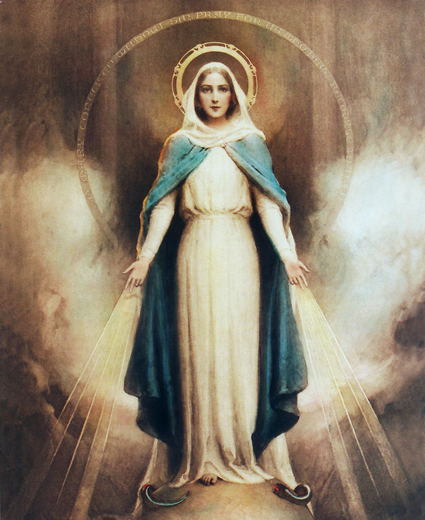
After the Blessed Virgin explained what the rays of light symbolized, Catherine gazed in wonder at an oval formed around Notre Dame, followed by words that appeared in a semicircle around the oval.
The words, in flaming gold letters, read: " O Mary conceived without sin, pray for us who have recourse to you " .
Catherine then heard these words: "Have a medal made according to this pattern. For those who wear it with confidence, there will be abundant graces. "
Catherine watched the image spin, revealing what would become the reverse side of the Miraculous Medal. She could see the letter M surmounted by a small cross and two hearts. One of the hearts was crowned with thorns and the other was pierced with a sword.
Our Lady then said: "All who wear it will receive great graces."
13) The only people Catherine told about the apparitions didn't believe her at first
When Catherine reported the first apparition to her confessor, Fr. Jean Marie Aladel, he told her that it had to be a dream and that she should try to forget it.
At the end of her second visions, Notre-Dame asked Catherine to keep the apparitions a secret from everyone except Fr. Aladel. But when Catherine told her again about her visions, the priest sent her away and told her that she had "too much imagination".
14) No one other than Fr. Aladel knew Catherine's secret
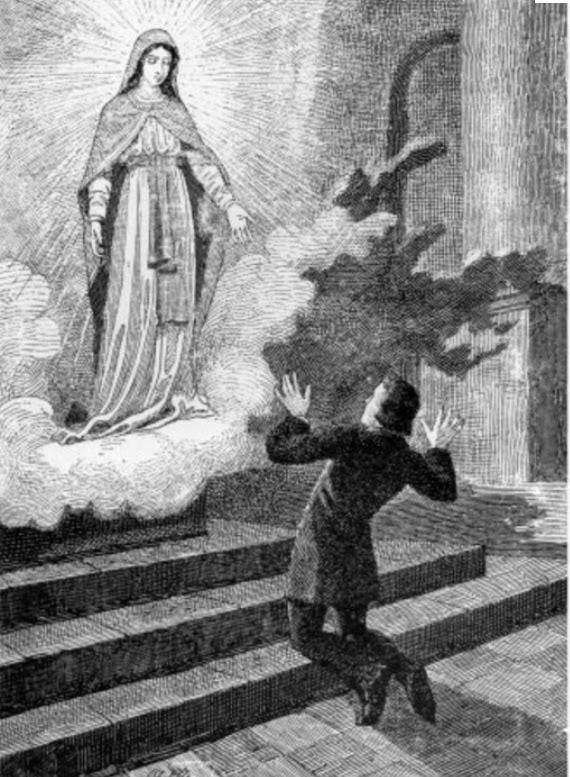
After the last apparition of Our Lady, Catherine again tried to communicate with Fr. Aladel but he refused to listen. Catherine received the habit of the Daughters of Charity on January 30, 1831 and went to work in a hospice in the Paris suburbs. She continued to ask Fr. Aladel, and after observing Catherine's normal daily behavior for almost two years, he finally informed the Archbishop of Paris of Notre Dame's request.
The bishop ordered that 20,000 medals be minted and distributed. The devotion became so popular that over a million medals were handed out in four years, and that number rose to over a billion when Catherine passed away.
15) The Miraculous Medal was not always the Miraculous Medal
When it was first released, the religious medal was known as the Medal of the Immaculate Conception .
Immediately after the church began to distribute the medal, many stories of miracles were attributed to him.
Most of the stories involved physical healings. In one example, devotees started a novena for the healing of a child unable to walk. On the first day of the novena, they gave him an Immaculate Conception Medal to wear, and on the same day he was healed.
Another example concerns the deadly cholera epidemic raging in Paris. Almost all the students in a particular class wore one of the medals, except for an 8-year-old girl, and only she was the only one among them who contracted cholera. She was given a medal to wear and the next day she was disease free and healthy enough to return to school.
As more and more stories of miracles came out, the Medal of the Immaculate Conception became the Miraculous Medal, and that title continues to this day.
16) The Miraculous Medal led to conversions
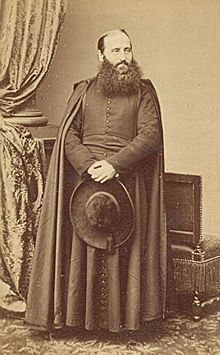
Some of the miracles associated with the Miraculous Medal had more to do with spiritual than physical healings.
One of the most famous stories involved a young Jewish man named Alphonse Tobie Regensburg , who spoke very vividly of his deep hatred of Catholicism. In 1841, during a trip to Rome, he met a recent Catholic convert named Baron Bussiers. After Regensburg and Bussiers shared a heated debate over Catholicism, Bussiers challenged Regensburg to wear a Miraculous Medal and recite the Memorare.
Regensburg has decided to please Bussiers. Shortly after wearing the medal and praying as instructed, Regensburg saw a vision of Our Lady exactly as she appeared on the Miraculous Medal. That same night, he converted to Catholicism and was baptized.
Even more surprisingly, Alphonse Ratisbonne became a Catholic priest, taking the name of P. Alphonse Marie.
17) Our Lady spoke to Saint Catherine most of her life
For over forty years, Catherine worked in a hospice, caring for dying patients.
Although Catherine only experienced three apparitions of Our Lady where she actually saw her, she did started experimenting with phrases - as an apparition but only as an interior voice - as Our Lady promised.
When Father Aladel died in 1865, Catherine found herself without anyone who knew her story and what she had been through. In May 1876, feeling that the end of her life was approaching, Catherine asked Notre-Dame for permission to share her story, which Notre-Dame granted.
18) You can see the body of Saint Catherine in Paris
Catherine died on New Years Eve - December 31, 1876 - at peace and convinced that his mission for Notre-Dame was over.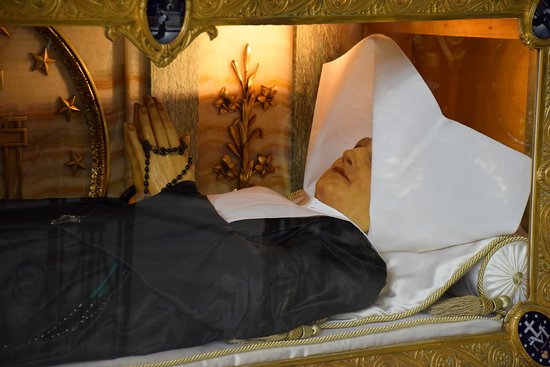
Almost 60 years after her death, Catherine was beatified on May 28, 1933. When her body was exhumed, it was found to be incorruptible.
Her body now rests in a transparent display case in the Chapel of Our Lady of the Miraculous Medal, in the same place where Mary appeared to him.
On July 27, 1947, Saint Catherine Labouré was canonized by Pope Pius XII.
A few years ago, I had the chance to visit rue du Bac and pray next to the incorruptible body of Saint Catherine. It was fascinating to be so close to her in the chapel where it all began.
19) Saint John Paul II had a devotion to the Miraculous Medal
When John Paul II visited the Chapel of the Miraculous Medal in the parish on May 31, 1980 , he recited this prayer: "You watch over the Church because you are the Mother of it. You watch over each of your children. From God you obtain for us all the graces which are symbolized by the rays of light which radiate from your open hands, and the only condition that you demand of us is that we approach with confidence, steadfastness and simplicity of a child. And this is how you lead us before your Divine Son. "
Interestingly, Pope John Paul II used a slight variation of the rear image of the Miraculous Medal as his coat of arms. The version on his coat of arms features a simple cross with an M in the lower right quadrant of the shield.
20) Saint Catherine was a prophet

According to the book " Saints Who Saw Mary " (The Saints who saw Mary) by Rafael Brown, Catherine prophesied that all of humanity would one day honor Our Lady.
She told her confessor that in the future, the month of Mary would be celebrated throughout the Church with great magnificence.
Catherine Labouré said: "Oh, how beautiful it will be to hear people say: Mary is the queen of the world! She will be honored with banners and she will go all over the world. "
Are you wearing a miraculous medal? Do your relatives wear them?
When i founded Boutique-Christian .com , the very first product I listed - apart from the blog posts I produced - was a Miraculous Medal. And I continue to urge everyone to wear one.
Christian Boutique® currently offers the biggest discounts of the year on miraculous medals in the hope that you offer them as Christmas presents to your friends, family, and even those who might not seem like wearing one.
After all, They might surprise you. Ask my grandfather.



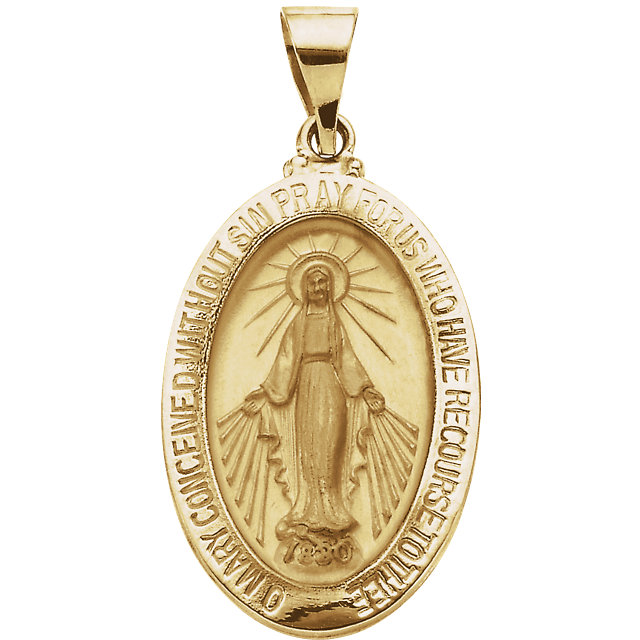








Ton témoignage me touche beaucoup…. mais où puis-je faire bénir ma médaille ??
Bonjour, je cherche le code médaille de Catherine khulmen miraculeux.
Je pense que j ai une médaille miraculeuse très vielle elle est en cuivre avec des petites pierres aux bouts des doigts et avec plus de détails que sur les autres médailles
Je pense que j ai une médaille miraculeuse très vielle elle est en cuivre avec des petites pierres aux bouts des doigts et avec plus de détails que sur les autres médailles
Merci à veronique de m’avoir offert des médailles pour aller mieux. Et surtout pour protéger ma famille dans routes circonstances. Amen kyrie eilison pour le monde . Merci vierge marie et dieu tout puissant .
Leave a comment